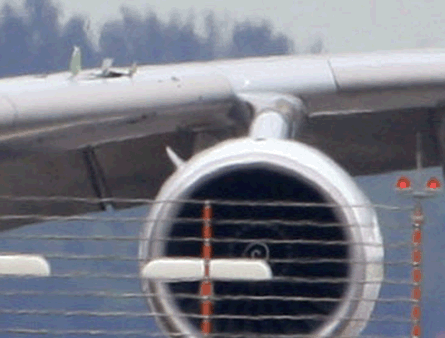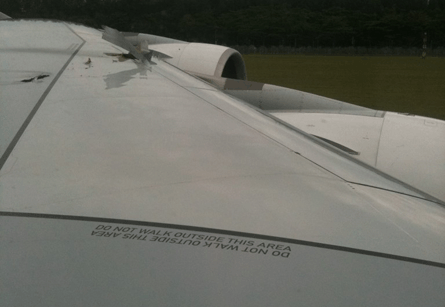Evidence of damage to the upper surface of the wing of the Qantas Airbus A380 involved in an emergency landing in Singapore indicates a puncturing effect from high-speed debris during the event.
It is uncertain whether the ejected debris, which clearly inflicted damage to the left wing's leading edge inboard of the number two powerplant, might have also affected the wing fuel tanks on the aircraft involved.
Investigators have yet to determine the origin of the failure which resulted in the rear shroud of the Rolls-Royce Trent 900 being torn off the aircraft in flight.
 |
|---|
© PADamage to the lower and upper surfaces of the leading edge of the wing is clearly visable |
 |
The upper surface damage pictured from within the aircraft |
Preliminary photographic evidence shows blackening behind the join to the forward nacelle section, in line with the low-pressure section of the engine, although the shroud failure left exposed the rear 'hot' section, including the high-pressure compressor and turbine.
Images of the aircraft on the ground at Singapore show the A380's main landing-gear doors are also open, whereas they would have been retracted during a normal approach and touchdown.
The significance of this, and the apparently retracted leading-edge slats, is unclear.
Investigators have recently been probing another uncontained Rolls-Royce engine failure on a Qantas flight, involving an RB211 on a Boeing 747-400 out of San Francisco on 30 August, which resulted in damage to wing components.
- Video of the A380 after landing ...
- Close up images of the missing engine cowling ...
- AirSpace gallery including cutaway section
- Image of the Day including more content links
- A380 profile page
- A380 In service report
- A380 engine manufacturers service report
Source: Air Transport Intelligence news



















